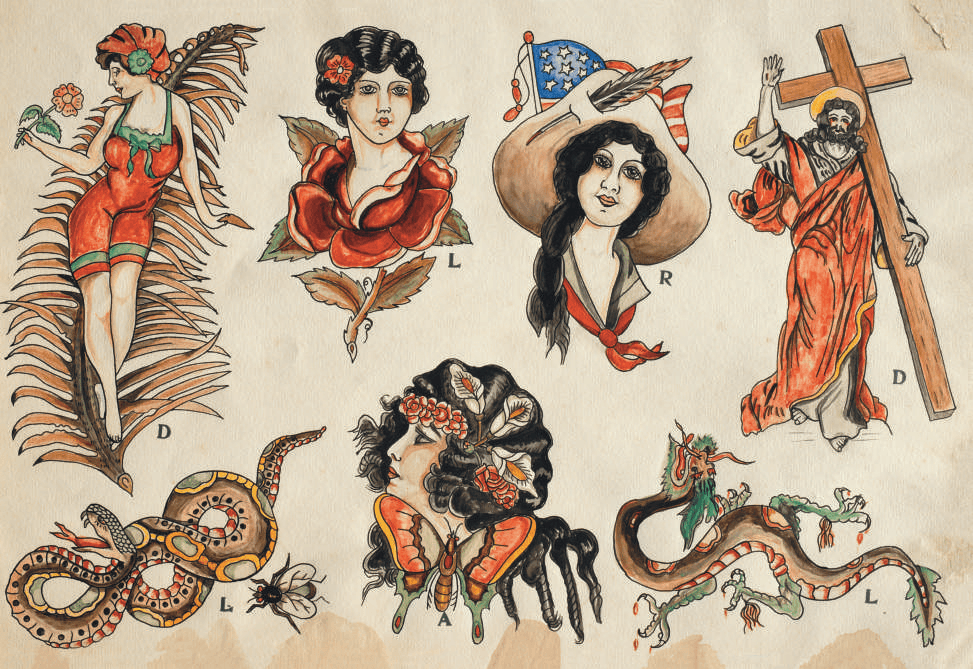First published: Winter 2021/22
Until the 1870s, tattoos marked and identified outsiders in Western culture – sailors, prisoners, criminals and other perceived undesirables. However, with the rise of popular entertainment in US and European cities in the nineteenth century, tattooed bodies and tattooing entered the mainstream as attractions in dime museums, carnivals and circus sideshows. Recently, further cultural normalisation has brought the art of tattooing fully out of the shadows and into the spotlight, and today’s millennials adopt tattoos as an imprint of their youth – a rite of passage to adulthood.

Shop sign used by Ted Liberty during his brief stint in Baltimore, c. 1950, courtesy: Derin Bray
The story of one family of Boston tattooers highlights a formative period in the popularisation of tattooing in the USA. Two generations of the Liberty family – patriarch Edward “Dad” Liberty and his sons Frank, Harold, and Ted – dominated the Boston tattoo scene from the 1910s to the 1960s, plying the trade from their shops in Scollay Square, the city’s gritty entertainment district.

Woman posing behind a board designed by Ben Corday (c. 1924), photo owned by Edward Liberty, courtesy: The Lyle Tuttle Tattoo Art Collection
Their careers straddled the Golden Age of American tattooing – which spanned both World Wars – and its postwar decline. The family saw the further demise of tattooing in their city when, in the 1960s, a ban on the practice was imposed on the whole of Massachusetts, and at the same time Scollay Square was destroyed in the name of urban renewal.
by JOHN FOSTER
This is an article extract; read the full article in Raw Vision #109




